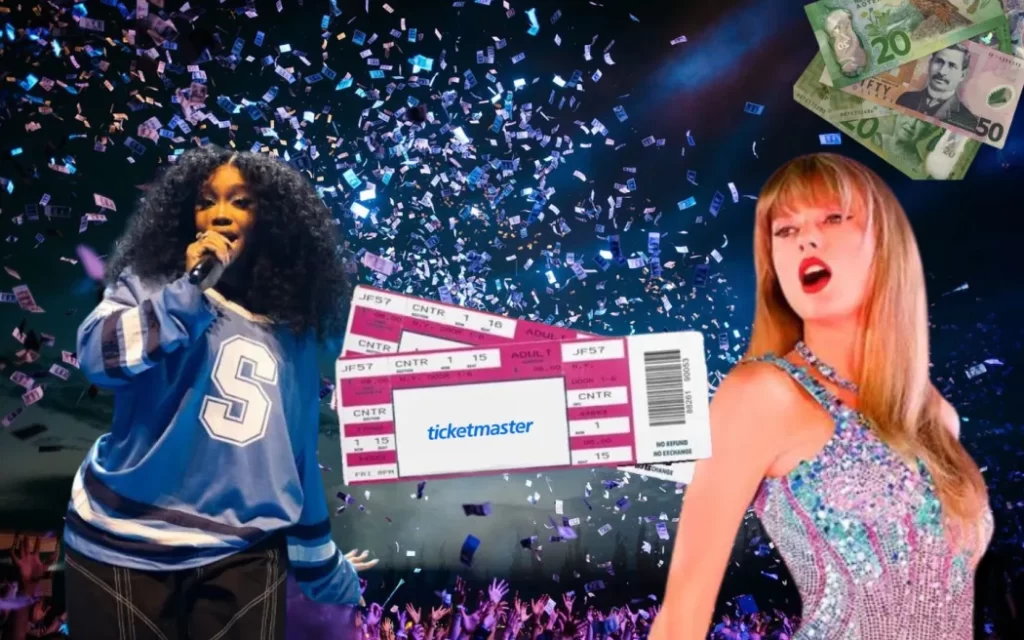
The last time Oasis performed at Wembley Stadium in 2009, a standing ticket cost £44.04. Fast forward to their comeback tour next summer, and the same ticket will set fans back £150—well above the inflation-adjusted price of £68. Some concert-goers faced even steeper prices due to “dynamic pricing,” which raises costs based on demand.
Oasis is far from the only band experiencing this trend. Over the past couple of years, concert ticket prices have surged dramatically. Last year alone, ticket prices jumped by 23%, following a 19% increase during the pandemic. Attending a live show now rivals the cost of a holiday, with prices continuing to escalate.
The situation has reached alarming heights, as seen in recent tours. Madonna’s VIP passes for her Celebration tour reached £1,306.75, while Beyoncé’s fans could pay up to £2,400 for front-row seats. According to Pollstar, the average ticket price for the top 100 global tours was £101 in the previous year, up from £82 in 2022.
In the UK, over half of concert-goers reported that high ticket prices have deterred them from attending shows in the past five years. Among younger audiences aged 16 to 34, two-thirds admitted to cutting back on their concert attendance. Despite this, high-priced tickets for major artists continue to sell out.
Abbi Glover, a 33-year-old from Lincolnshire, expressed her frustration, stating that ticket prices create a divide between those who can afford them and those who can’t. “What do I have to do to just enjoy these things when I’m doing everything I can?” she questioned.
While UK prices are still lower than those in the US, experts suggest that trends often cross the Atlantic. Reg Walker, a ticketing expert, remarked that the UK typically sees price increases five to ten years after the US.
Many attribute the soaring costs to artist greed. Gideon Gottfried, Pollstar’s European editor, noted that some musicians, like Bruce Springsteen, have raised ticket prices significantly to combat scalpers. Springsteen faced backlash when some tickets for his 2023 US tour reached $5,000 (£3,874), but he defended the hikes by saying he wanted to ensure that profits went to the artists rather than scalpers.
Gene Simmons of Kiss echoed similar sentiments, describing ticket pricing as a natural part of capitalism: “If you’re not selling tickets, the price goes down.” Other major artists such as Coldplay, Harry Styles, and Taylor Swift have also employed dynamic pricing strategies, although Swift opted out for her recent tour due to fan backlash.

Prime Minister Sir Keir Starmer has promised to address ticket pricing, aiming to make concerts more affordable. However, the reality is complex. For a £150 ticket, artists only receive a fraction, as costs for crew, transportation, VAT, ticket fees, and promoters cut into profits.
Several factors contribute to rising ticket prices. Many artists are still recovering from the impact of streaming, which has reduced their income significantly. With concerns about long-term sustainability, some are keen to maximize earnings while they can.
Not everyone is on board with high pricing. Punk-pop artist Yungblud organized a festival with tickets priced at £49.50, after noticing empty seats on his US tour due to high prices. Despite his good intentions, the event faced logistical challenges that led to long entry delays for fans.
Other artists have also capped ticket prices. Paul Heaton set a maximum price of £35 for his upcoming tour, while pop star Caity Baser offered tickets at just £11. These artists, however, do not require the extensive productions of bigger acts, which have seen their costs skyrocket post-pandemic.
Touring expenses have ballooned due to increased transport, freight, catering, and accommodation costs. For instance, shipping a stage can cost up to 300% more than before COVID-19. These additional costs are squeezing profits further, with many promoters stating that production expenses have doubled or tripled.
The landscape for small venues is equally challenging. Despite lower average ticket prices, many are struggling to sell out shows as fans prioritize expensive stadium concerts. This shift in spending habits, coupled with rising operational costs and a younger generation’s decreased alcohol consumption, has led to closures in grassroots music venues.
As concert promoters shift to a higher price model, fans are faced with a dilemma: pay more for premium experiences or miss out. While the biggest artists can charge hundreds of pounds per ticket, smaller acts are finding it increasingly difficult to compete.
In conclusion, while live music remains a cherished experience for many, the reality of skyrocketing ticket prices poses significant challenges for fans and artists alike. The concert landscape continues to evolve, and only time will tell how it will affect the future of live performances.








